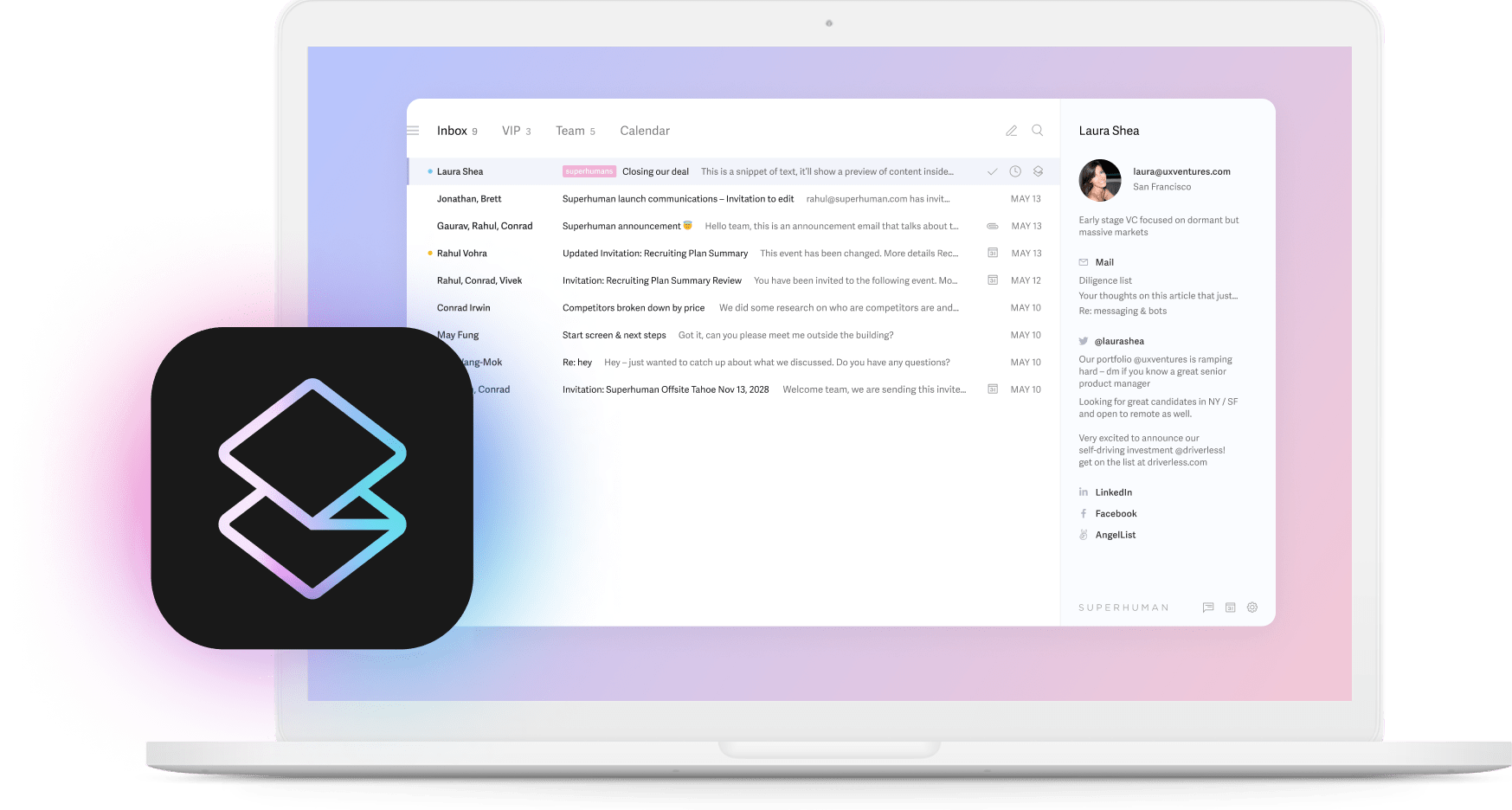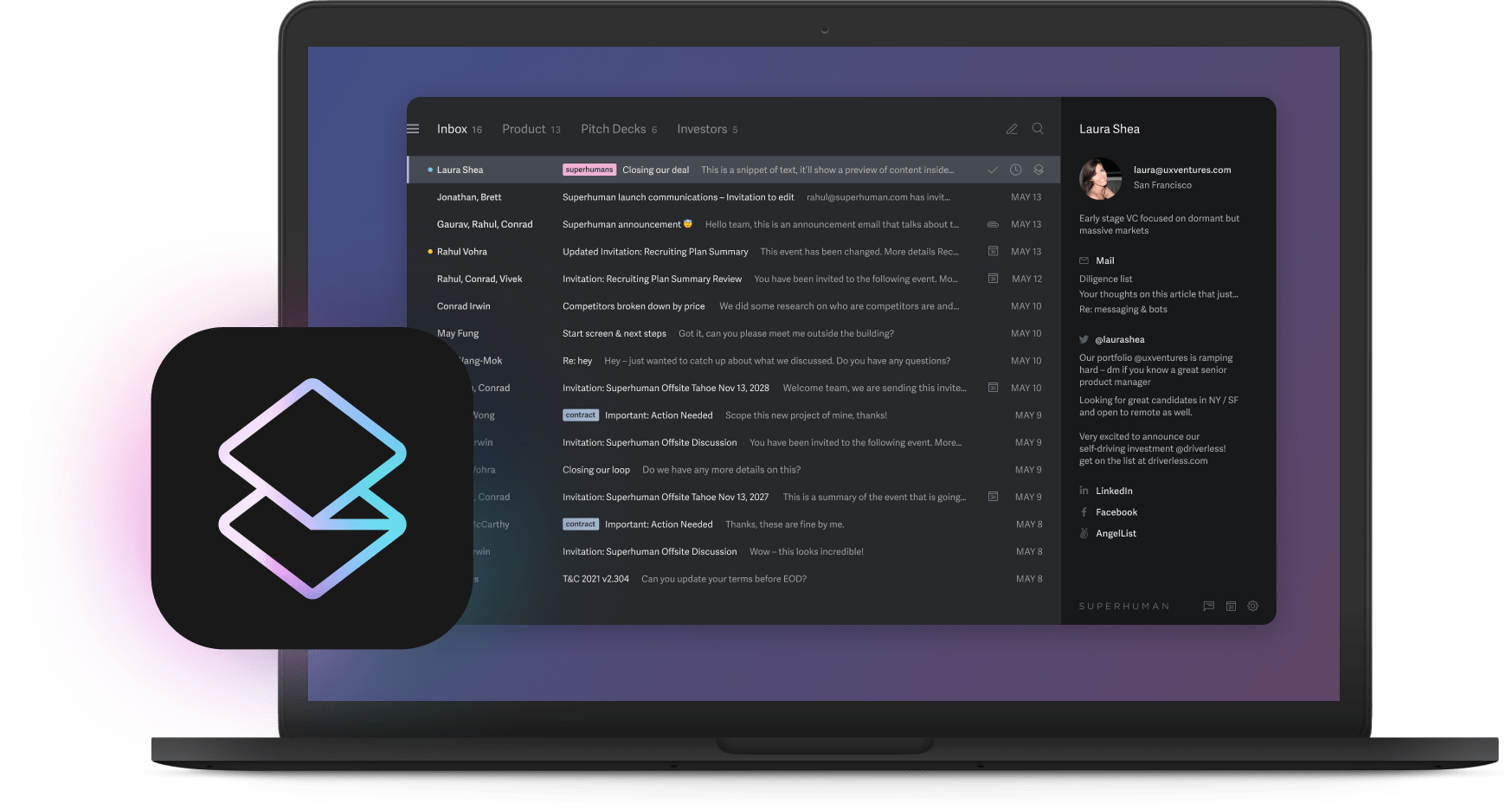
You know that CEO who claims they wake up at 4 a.m. and meditate for an hour? They're lying. Or they don't have kids. Or their company runs itself. Because in the real world, your phone buzzes before your eyes open, and by 7 a.m. you've already answered three "urgent" emails from bed.
Here's what every productivity guru gets wrong: they think you need better habits. But when most leaders can't focus for more than 10 minutes without interruption, that's not a habits problem. That's a systems problem. Time management strategies for executives must create hours, not shuffle them around.
The solution isn't another morning routine or a new calendar app. You need AI tools that handle the repetitive work drowning your day. When machines manage your inbox, organize your data, and draft your communications, you get back 20 hours every week. Not 20 hours to fill with more meetings. Twenty hours to think, strategize, and maybe even leave the office while it's still light outside.
Quick start: your 2-hour, 20-hour return setup
Two hours from now, your workday could look completely different. Here's exactly what to do to reclaim a full day every week.
Spend 40 minutes on email. Set up Superhuman's Split Inbox to sort important messages from newsletter clutter. Turn on Instant Reply so it drafts responses in your voice. You know how you write differently to your CFO than to your college buddy? Superhuman learns that and matches your tone to each recipient. This alone cuts email time in half because you're no longer typing every response from scratch.
Next 50 minutes go to data consolidation. Pick one workspace tool like Coda, ClickUp, or Airtable. Connect your sales numbers, financial reports, and project updates. Everything lives in one place now. No more asking "Who has the latest deck?" in Slack at 11 p.m. When information is instantly accessible, decisions happen faster and meetings get shorter.
Last 30 minutes are for communication automation. Install Grammarly or set up ChatGPT. These tools turn your bullet points into polished emails. They summarize hour-long meetings in three sentences. They write the board update you've been putting off for two weeks. Why spend an hour crafting the perfect message when AI can do it in seconds?
Week-1 checklist: time reclamation protocol
Five things to do this week:
- Turn on Split Inbox and Instant Reply
- Build one dashboard with all your key numbers
- Connect your calendar, docs, and Slack to that dashboard
- Add AI writing to your workflow
- Block 15 minutes daily to adjust the settings
You'll feel the difference by Friday. Fewer unread emails. Data at your fingertips. Messages that write themselves. The real magic happens when these tools start working together.
Advice that doesn't work (and why it steals your time)
Time blocking sounds great in theory. You'll focus on strategy from 9 to 11, then handle email until lunch. Except your biggest customer just churned and needs a call right now. There goes your morning block.
The Pomodoro Technique assumes you can ignore the world for 25 minutes. Try that when your team is launching a product and hitting bugs every hour. You'll spend more time restarting the timer than working.
Batch processing email twice a day? Sure, if you want angry investors wondering why you haven't responded to their "quick question" from this morning. In the real world, some emails can't wait.
These methods were designed for people with predictable schedules. You don't have one of those. Your day changes every hour based on what's on fire. You need tools that adapt to chaos, not rigid systems that break the moment something urgent happens.
Brutal time audit: where your hours really evaporate
We tracked how executives spend their time. Brace yourself.
You lose 12 hours weekly to email. Not reading important messages. Just processing the endless stream of FYIs, reply-alls, and "circling back" nonsense. Another 11 hours vanish into meetings where people explain what the real meeting will cover next week.
Eight hours disappear hunting for information. "What were our Q3 numbers?" "Where's the product roadmap?" "Who owns pricing decisions?" You ask these questions repeatedly because data lives in 20 different places.
Six more hours go to micro-approvals. Expense reports under $100. Vacation requests from senior staff. Blog posts that marketing should publish without your input. Many executives say most of their meetings add no value.
What's left? Maybe a few hours for deep thinking. But even those get chopped into 15-minute fragments between interruptions. You never get into flow. You're always reacting, never creating.
Try this tomorrow. Track what you do every 15 minutes. Write it down. Count how many times you switch between tasks. Circle everything that doesn't require your brain. Most executives find 5-10 hours of work that a smart tool could handle.
The three-tool time machine
Forget optimizing your calendar. Create new time instead. Three AI tools working together give you back a full day every week.
Tool 1: Email AI as time creator
Email isn't communication anymore. It's a part-time job. Superhuman changes that.
Split Inbox puts important messages on top. Investor updates, customer escalations, and team emergencies appear first. Newsletters and cold pitches wait at the bottom. You see what matters without scrolling through 200 messages.
Instant Reply learns how you write. Not generic templates. Your actual voice. It drafts responses by studying your past emails to each person. Review, tweak if needed, send. Five-minute emails become 30-second tasks.
Auto Labels organize everything without rules or folders. Snippets drop your common responses with one keystroke. Comments let you discuss emails with your team right in the message. No more forwarding chains back and forth.
Here's your setup:
- Turn on Split Inbox and choose what matters most
- Feed Instant Reply 50 of your sent emails
- Create Snippets for responses you type every week
- Let Auto Labels run for a week, then refine
Email becomes a tool you control, not a beast that controls you. Teams using Superhuman save 4 hours per person weekly. And customers using AI respond twice as fast as those not using AI.
Tool 2: Connected workspace as decision engine
"Where's that document?" kills more time than you think. A connected workspace ends the hunt and accelerates every decision you make.
Why do executives waste eight hours weekly searching for information? Because critical data lives in silos. Sales numbers in your CRM, financial metrics in spreadsheets, project status in various tools, and strategy documents scattered across Google Drive. Each search interrupts your thinking and forces you to rebuild context. Worse, when you finally find the data, you often discover it's outdated or conflicts with another source.
A connected workspace solves this by creating a single source of truth. Connect your CRM, financial tools, and project trackers to Coda, ClickUp, or Airtable. Now revenue numbers, pipeline data, and team updates live in one place. Dashboards refresh automatically, showing real-time metrics instead of last week's snapshot. Everyone sees the same information, eliminating those "which numbers are right?" debates that derail meetings.
The decision-making impact is immediate. No more pre-meeting meetings to align on numbers. No more "let me get back to you" because you can't find the data. When information appears instantly, decisions happen faster. Teams post updates asynchronously instead of scheduling another sync, freeing up hours of meeting time every week.
Setup is straightforward but powerful. Connect your core tools through native integrations: sales data, financial metrics, and project status at minimum. Build one executive dashboard with your vital metrics visible at a glance. Replace weekly status meetings with async updates in the workspace. Log decisions with context so nobody wastes time relitigating closed discussions.
Information flows to you instead of you chasing it. When data is instantly accessible and always current, you make better decisions faster. That's how you reclaim those lost hours and invest them in growth.
Tool 3: AI communication as force multiplier
You make 50 decisions a day. Then you need to communicate each one. Board updates, team announcements, customer responses. This burns another five hours weekly. AI communication tools handle the writing so you can focus on the deciding.
Why does executive communication take so long? Because every message needs the right tone, clarity, and completeness. A board update requires formality and data. A team announcement needs energy and clarity. A customer response demands empathy and solutions. You spend more time crafting the message than making the decision it communicates.
AI tools solve this by becoming your writing partner. Meeting transcription tools capture everything said, then create summaries with clear next steps. No more staying late to write up meeting notes or asking "who's capturing action items?" Grammarly and ChatGPT turn your rough bullet points into polished messages that match your intended tone. They translate technical jargon into language your board understands, or transform formal updates into engaging team communications.
The time savings compound because communication becomes frictionless. Instead of spending 30 minutes writing a project update, you list key points and let AI draft. Instead of an hour crafting the perfect investor email, you outline your message and refine AI's version. Research shows AI tools boost writing speed significantly. For executives drowning in communication requirements, that translates to hours reclaimed every week.
Make it work by integrating AI into your existing workflow. Record key meetings and auto-generate summaries that capture decisions and next steps. Connect summaries to your workspace for automatic task creation so nothing falls through cracks. Use Grammarly for external communications where tone and clarity matter most. Let ChatGPT handle first drafts of routine responses that follow predictable patterns.
Communication happens at the speed of thought. When you can move from decision to announcement in minutes instead of hours, you maintain momentum and keep your entire organization aligned. That's how you transform communication from a time sink into a competitive advantage.
Implementation reality: from chaos to capacity
Transformation doesn't happen overnight, but it doesn't take months either. Follow this progression to move from drowning in tasks to commanding your time.
Week 1 is about foundation. Don't overthink the setup. Just get the tools running. Two hours of configuration pays back immediately because even basic automation beats manual work. You'll see quick wins like faster email responses and easier data access that prove the system works.
Week 2 builds habits that stick. Spend 15 minutes daily tweaking settings based on what you learn. AI improves with feedback, so train it on your preferences. Kill one recurring meeting that should be an email and redistribute that time to strategic work. Create your first automation for a repetitive task. Small changes compound into big results.
Week 3 shows measurable results. Track how many emails AI handled versus what you touched manually. Count decisions made without meetings because data was instantly available. Notice you didn't open your laptop on Saturday for the first time in months. These metrics prove the system works and motivate continued adoption.
Week 4 is optimization based on data. What saved the most time? Double down. What's still painful? Adjust your approach. By now, most routine work runs on autopilot, freeing your brain for high-value thinking. You're not just working faster, you're working differently.
Common challenges have simple solutions. When AI writes something weird, it needs more examples. Twenty more emails usually fixes tone issues. When teams resist new tools, show one quick win like an hour saved in their week. They become believers fast. When integration breaks, check API permissions first. It's almost always a permission issue.
Leading companies have dramatically reduced routine task time with similar approaches. You're not experimenting with unproven methods. You're implementing a system that works. The only question is how quickly you'll see results.
Metrics that matter
You can't claim victory without proof. Track these five numbers to turn vague "productivity" into concrete time savings you can measure and improve.
Hours-to-value ratio shows whether your time investments pay off. Log the minutes you spend on a project, then divide by the revenue generated, cost avoided, or strategic value created. Every hour should create five hours of value initially. Push for ten-to-one returns by quarter two. This metric forces you to question low-value activities and redirect time to high-impact work.
Decision speed measures how fast you move from question to answer. Set targets: 48 hours for routine decisions, 72 for strategic ones. Track this in your workspace by stamping proposals with created and approved timestamps. AI adoption increases decision speed significantly because information appears instantly and communication happens immediately. Faster decisions mean faster execution and competitive advantage.
Email response time reveals communication bottlenecks. Track board, customer, and team emails separately. Anything over four hours signals a problem that's damaging relationships or slowing progress. Your inbox already records send and reply times. Export that data monthly to spot trends and adjust your system accordingly.
Weekend hours measures true work-life balance. Count Friday night to Monday morning work time. Most executives start above six hours, constantly playing catch-up. Aim for under two by week eight. This isn't about working less, it's about working so efficiently during the week that weekends become optional.
Fire drills per quarter tracks system effectiveness. Every surprise crisis that derails your day represents a failure in information flow or delegation. Use a simple tick mark each time an emergency lands unexpectedly. One or fewer per quarter means your systems work. More indicates you need better alerts, clearer delegation, or improved async communication.
Check these metrics weekly. Watch them improve. Feel your stress decrease as numbers prove what you sense: you're reclaiming control of your time.
Conclusion
You have a choice. Keep drowning in email while important projects stall. Keep hunting for documents while competitors move faster. Keep working weekends while your family wonders why success means seeing you less. Keep wondering why you're busier than ever but accomplishing less than when your company was half the size.
Or reclaim 20 hours every week starting today. Set up three tools that work together to multiply your time. Wake up tomorrow to an inbox that manages itself, data that appears when needed, and messages that write themselves. This isn't about working harder or smarter. It's about letting machines handle what machines do best so you can focus on what only you can do.
The math proves it works. Split Inbox and Instant Reply help teams respond 1 day faster while handling twice the volume. Connected workspaces cut decision time in half by eliminating information hunting. AI communication tools transform hours of writing into minutes of editing. Together, they give you back a full day every week. In fact, most professionals already save 1 day a week with AI. You can too.
Your company didn't hire you to sort email and format presentations. They hired you to spot opportunities, make tough calls, and guide the organization through uncertainty. These tools handle the repetitive work so you can deliver on that promise. Every hour you spend on tasks a machine could handle is an hour stolen from strategic thinking that moves your business forward.
Start now. Two hours of setup today creates twenty hours every week forever. Open Superhuman, connect your tools, and discover what you can accomplish when time stops being your enemy and becomes your competitive advantage.






